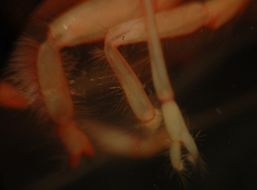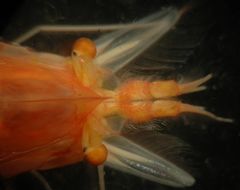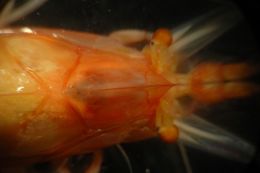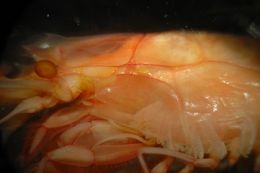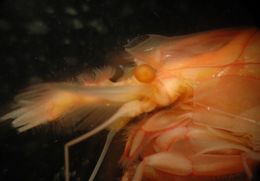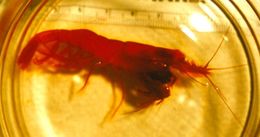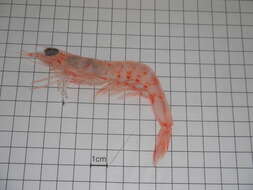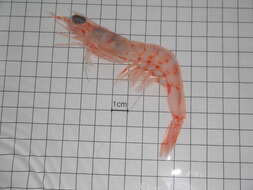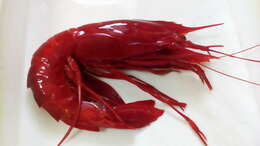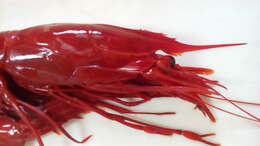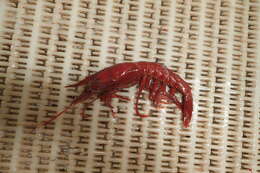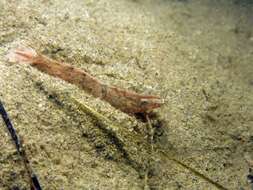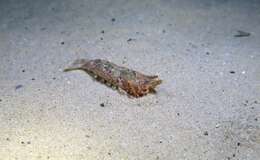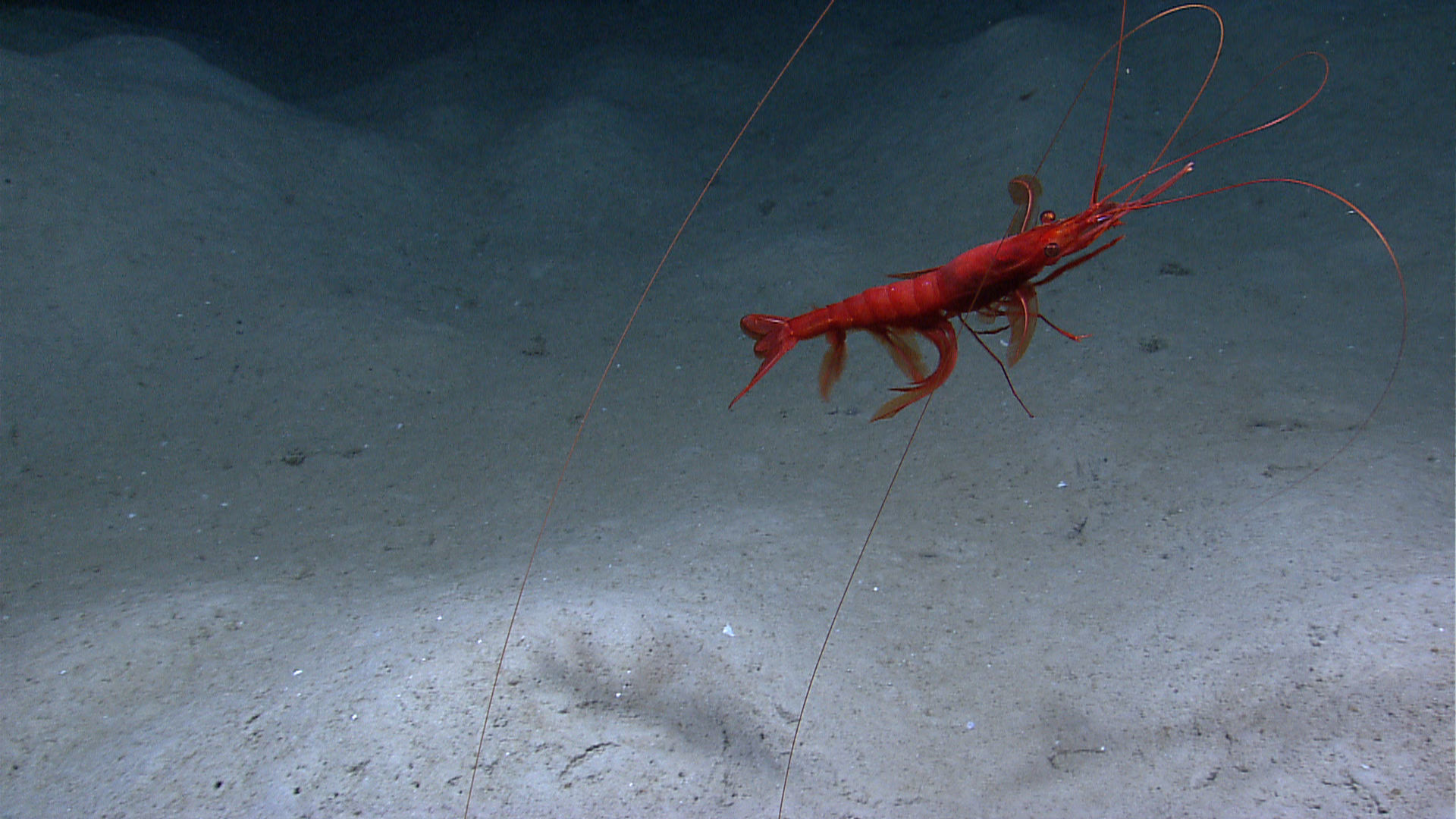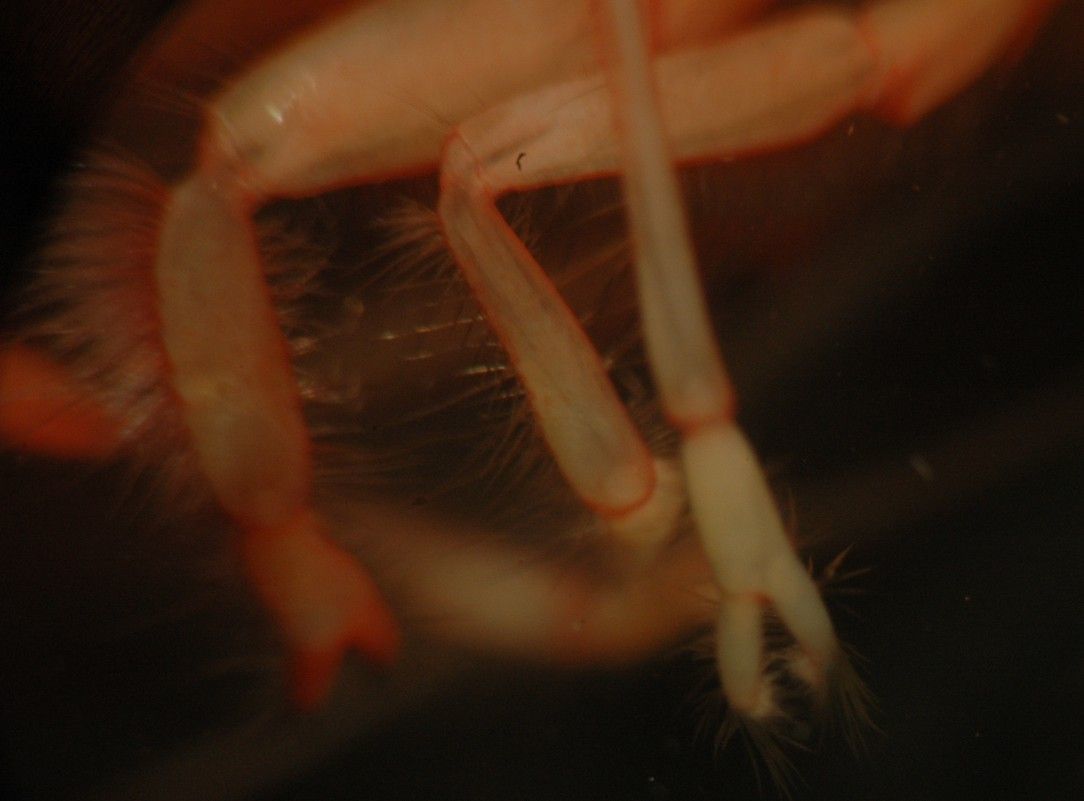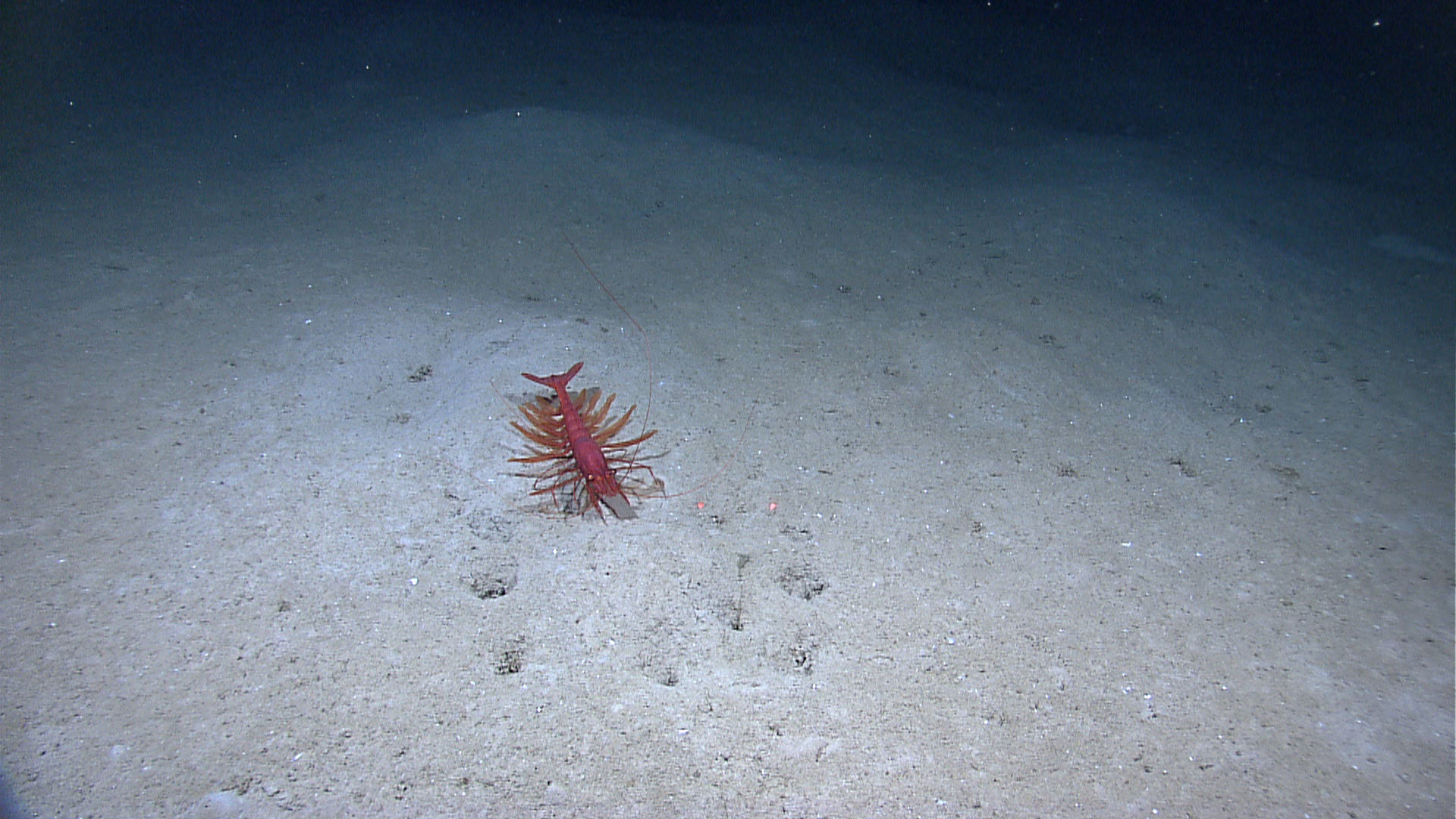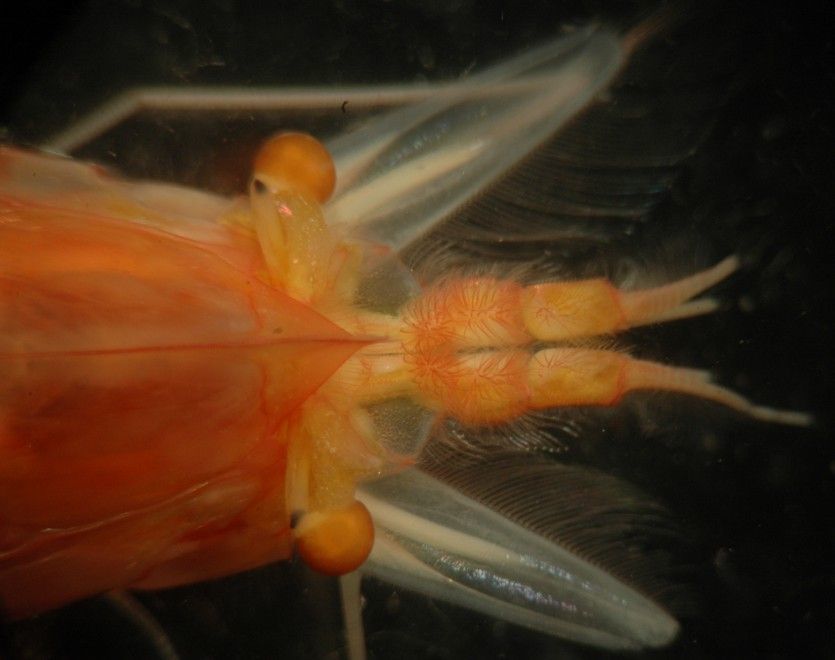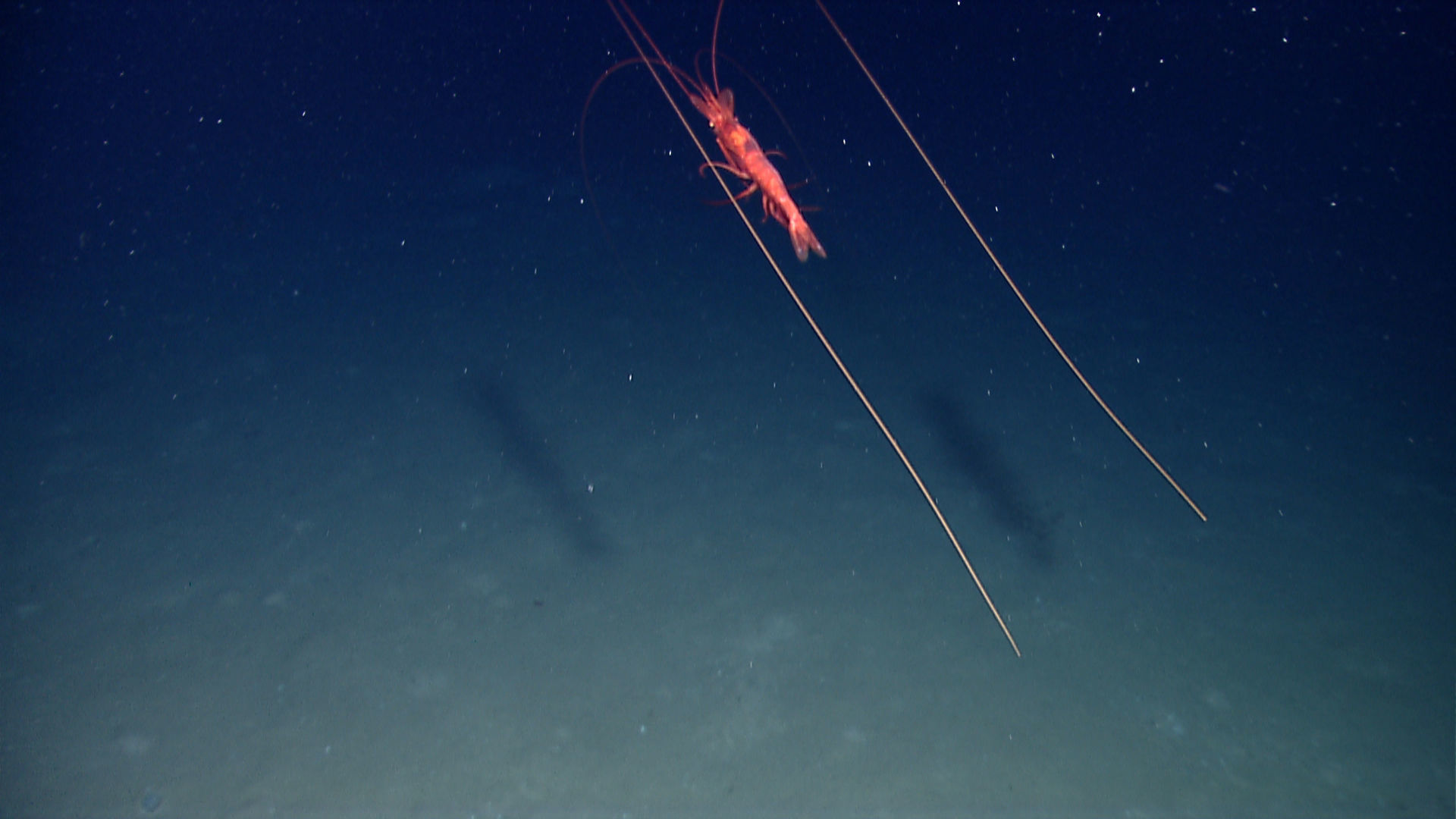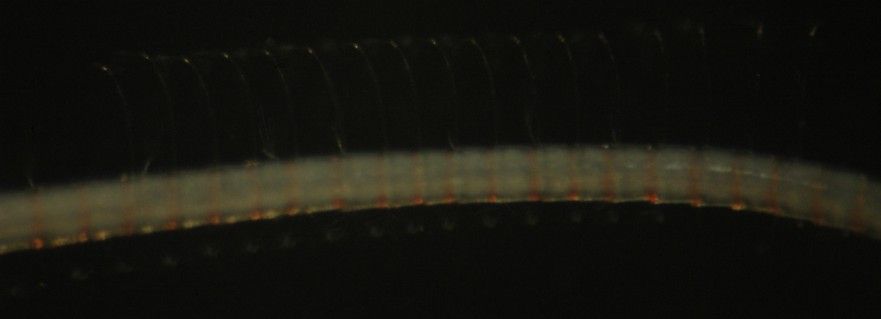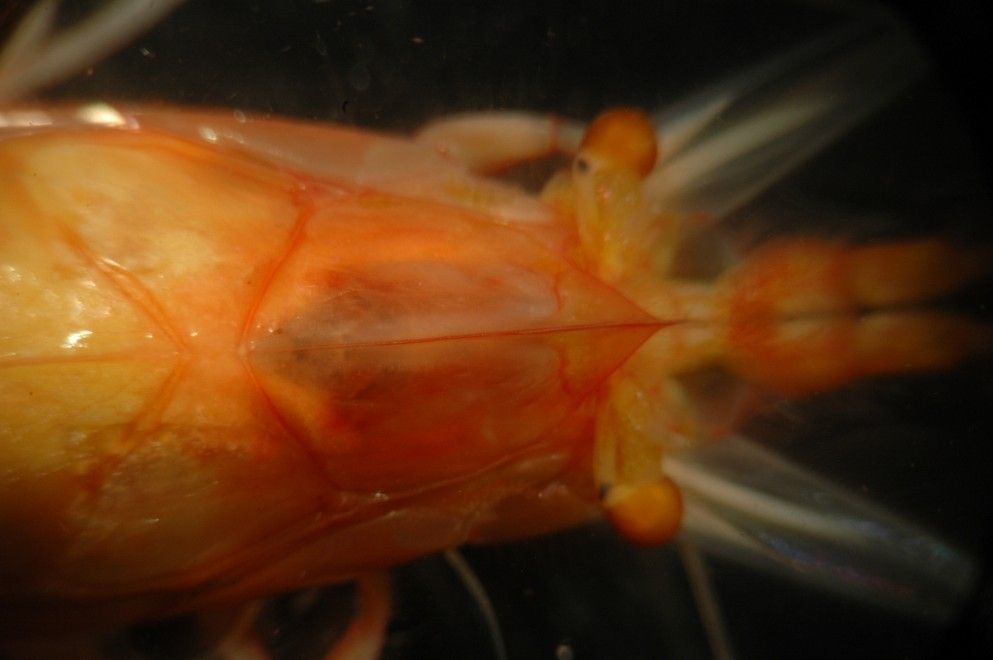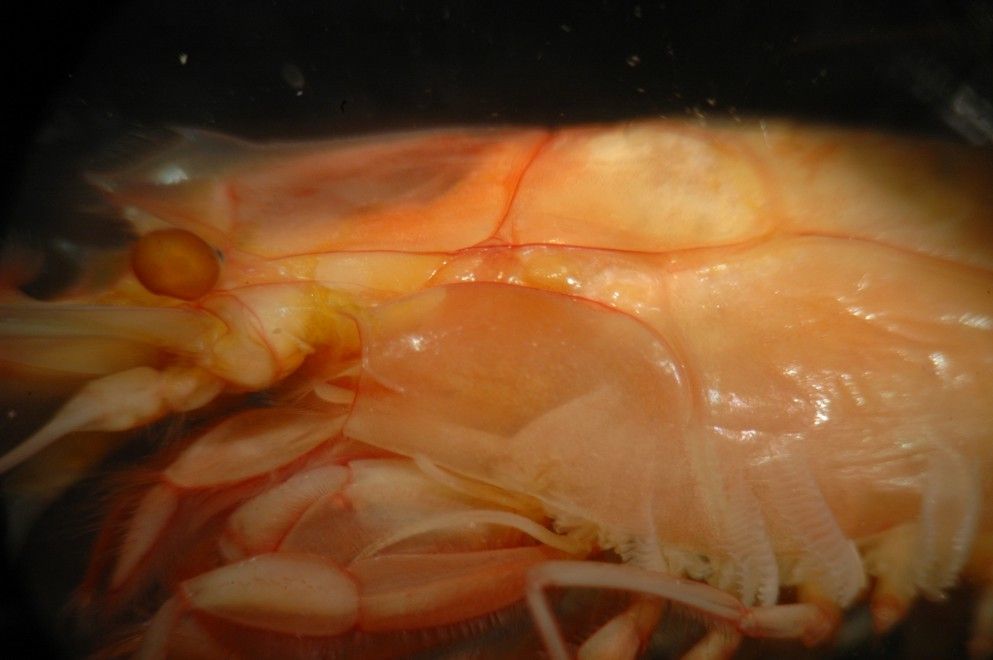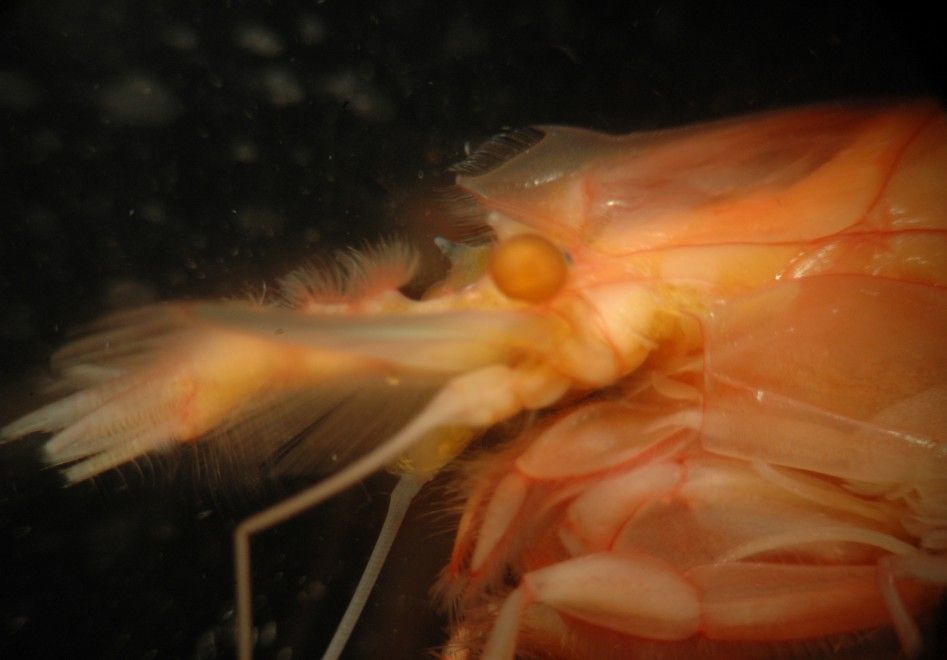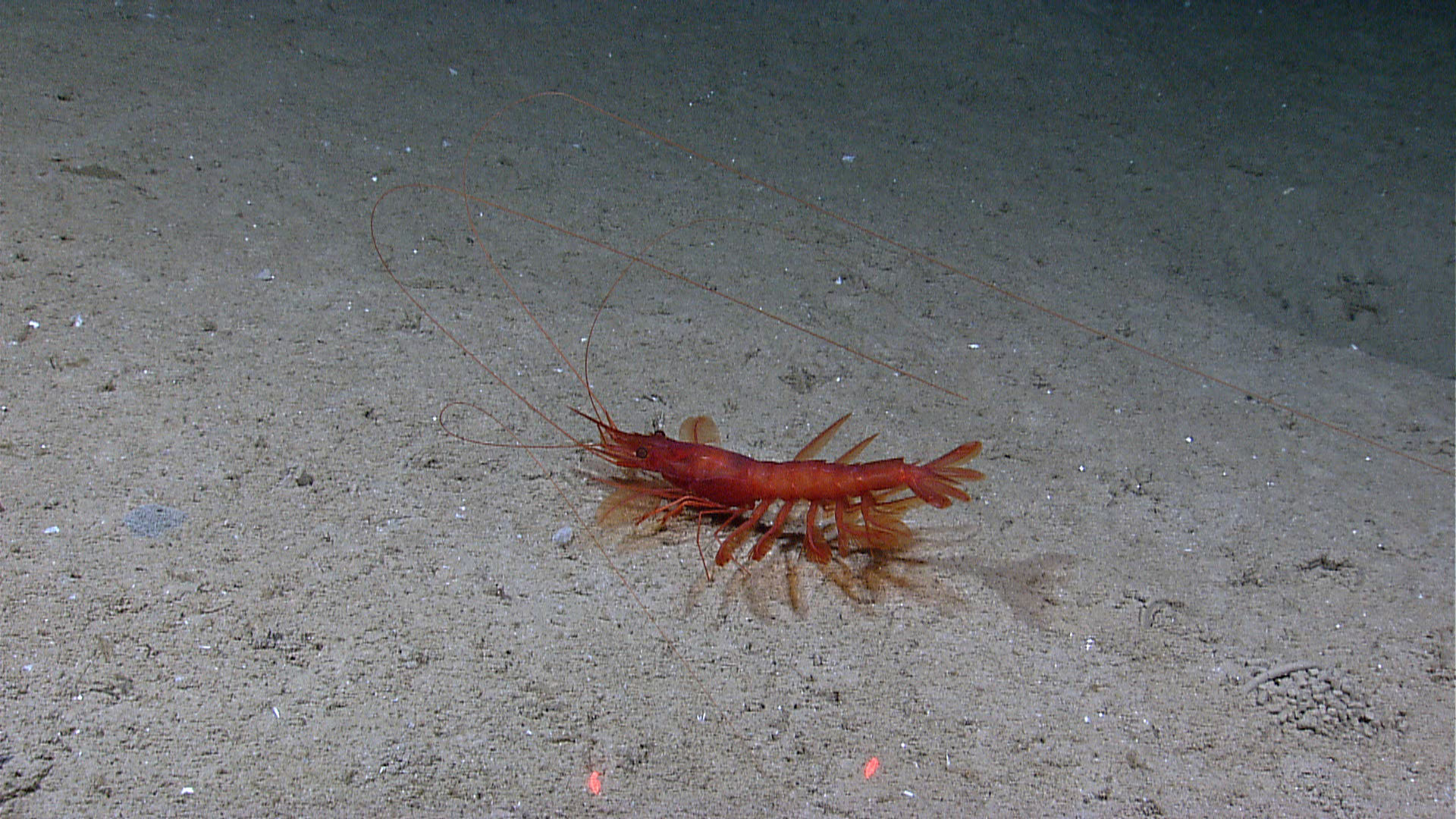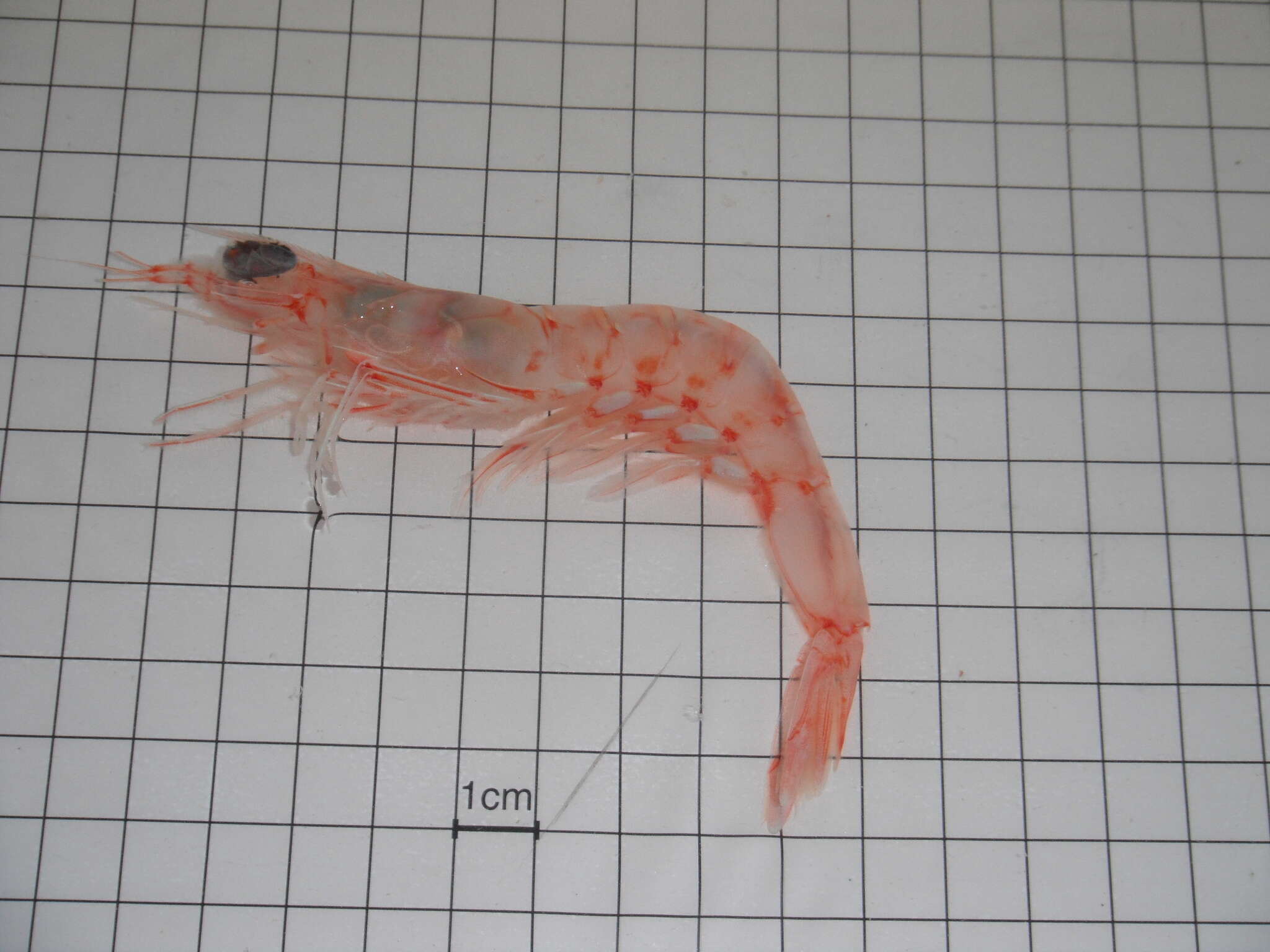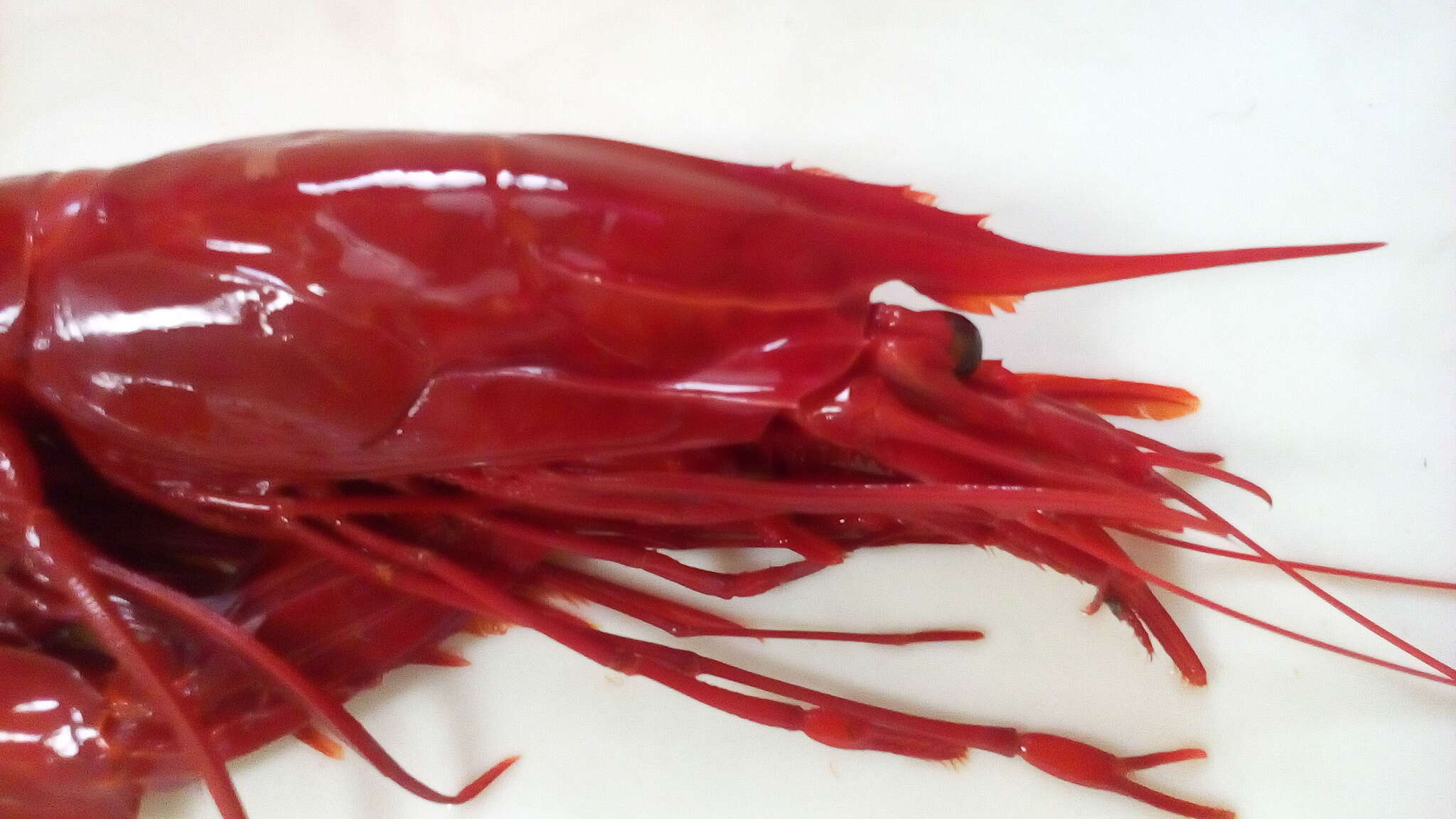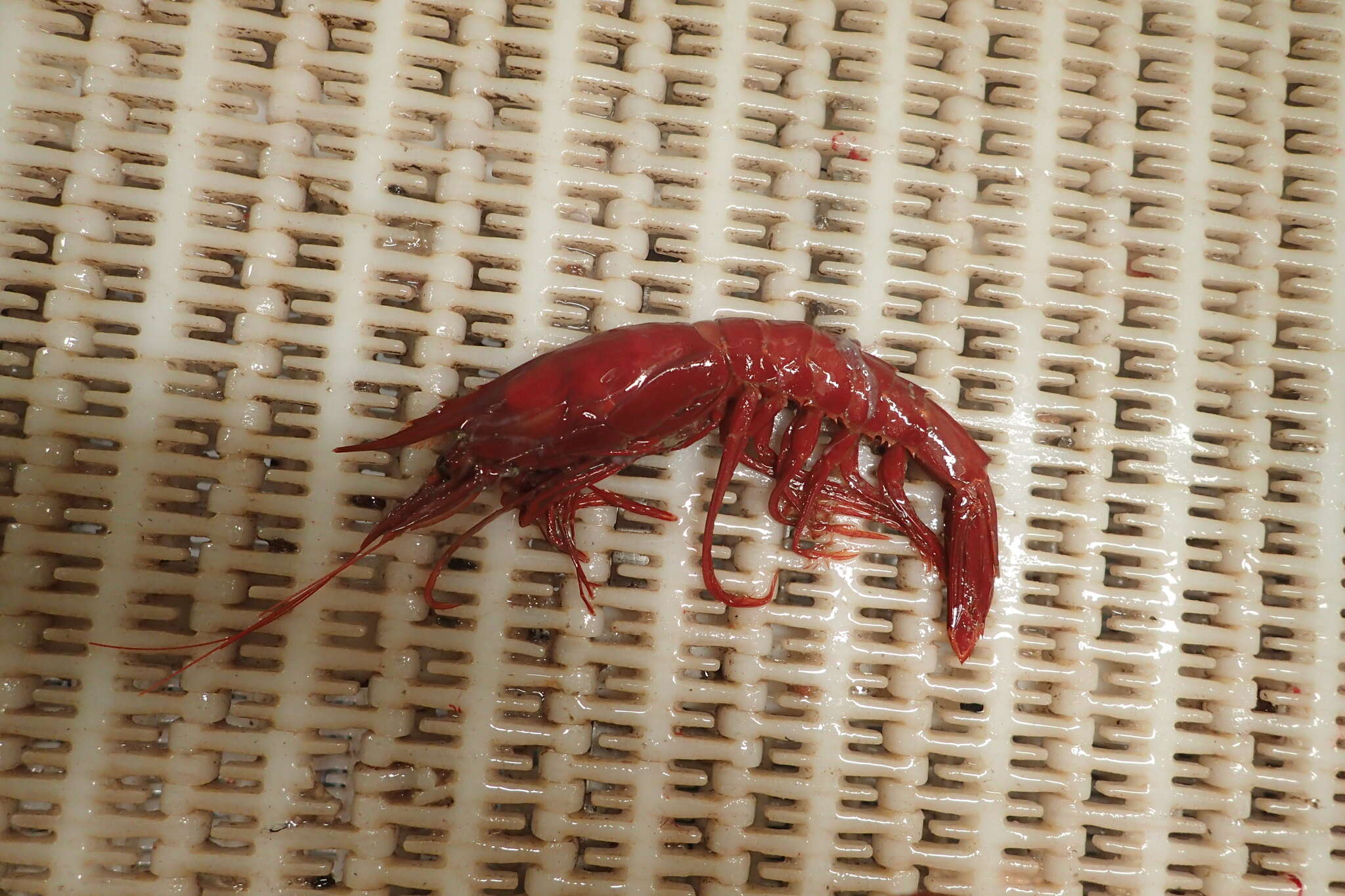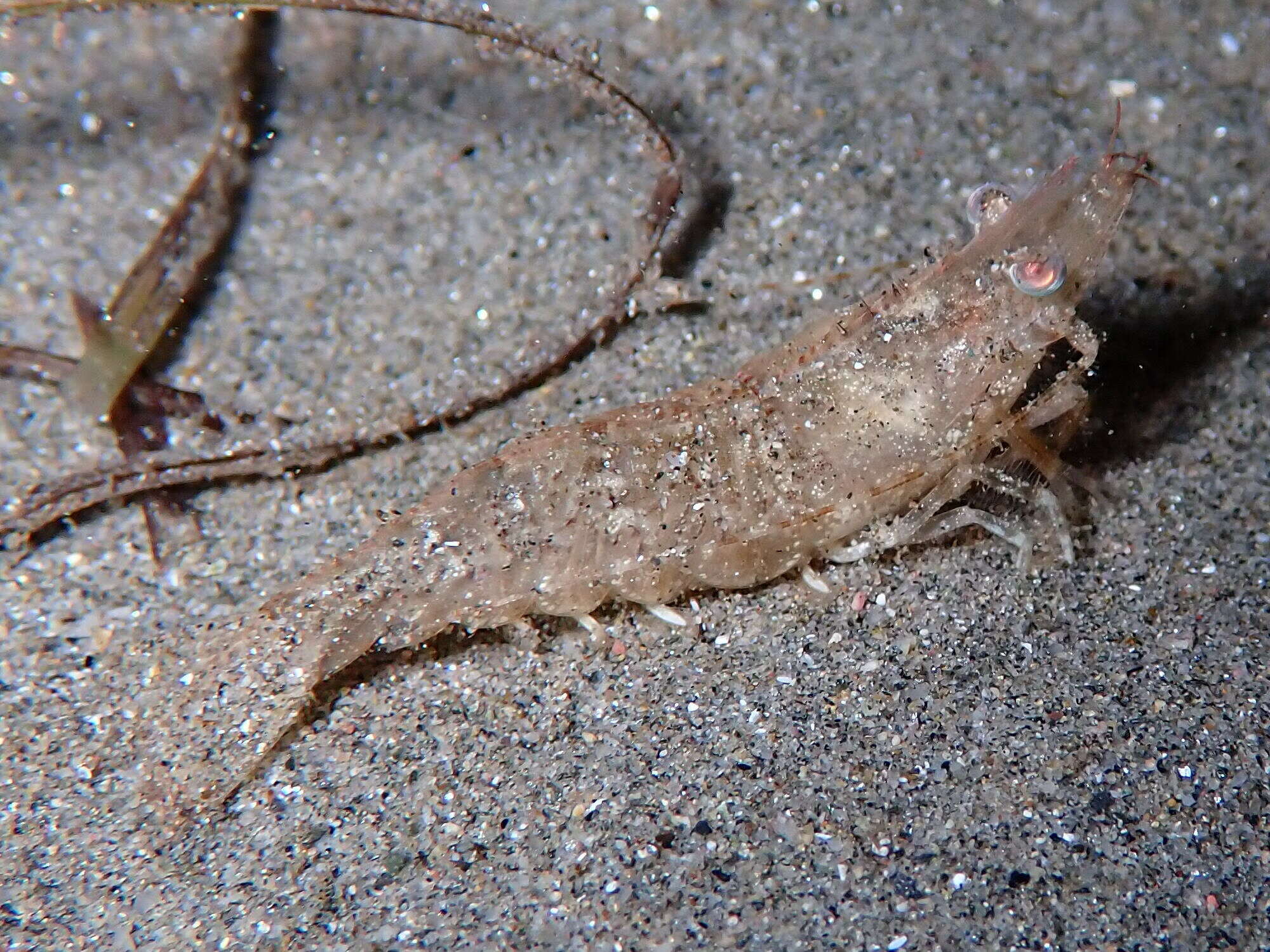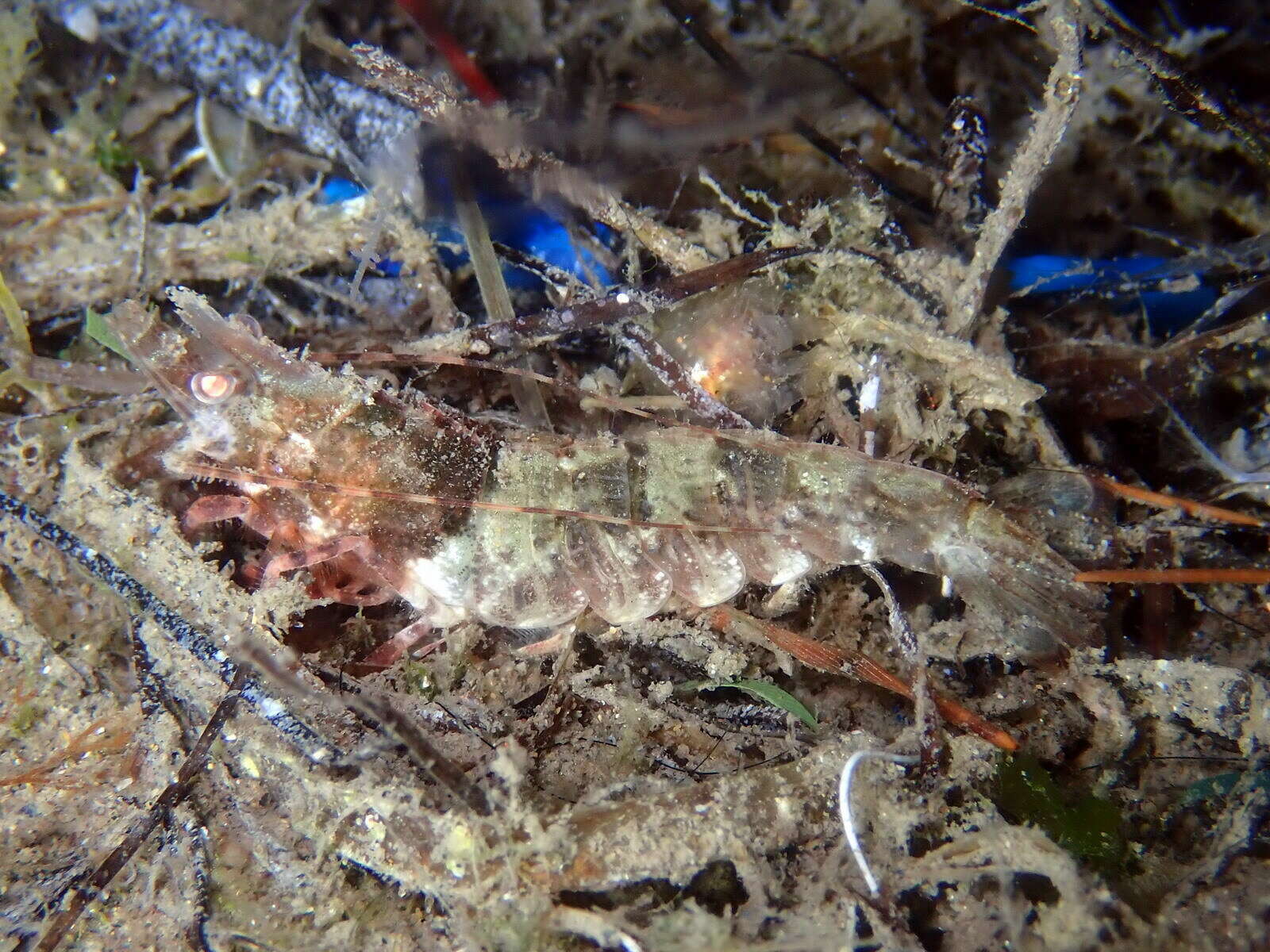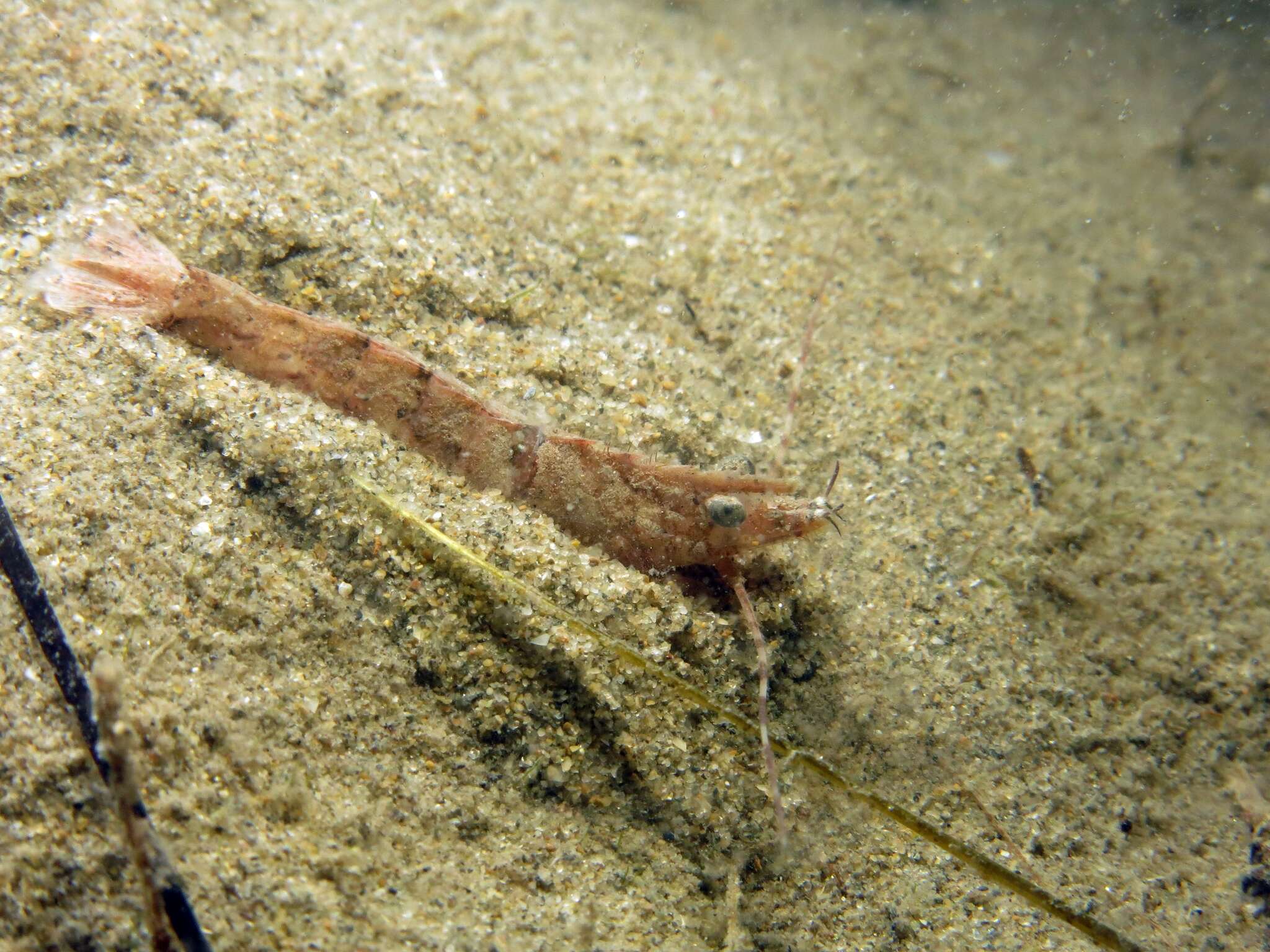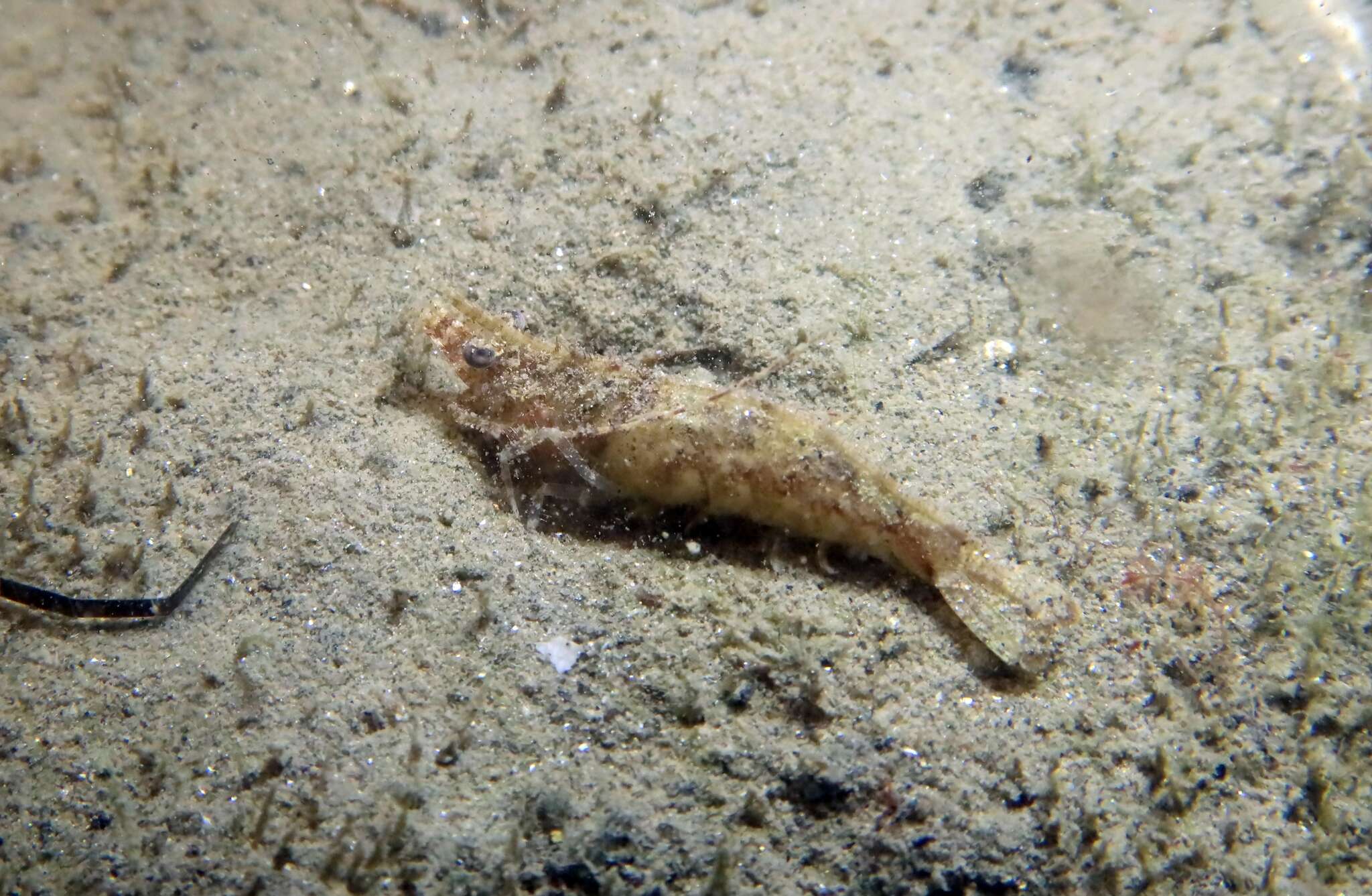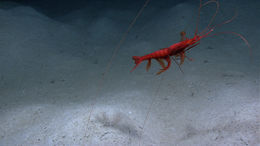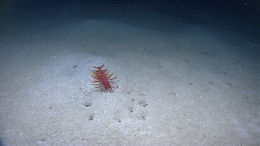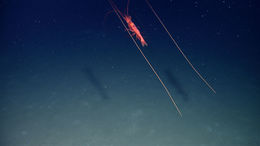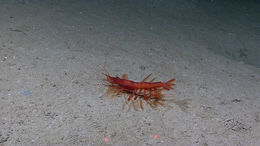-
-
As a member of family Penaeidae, pereopods 1-3 are all chelate. This photo of a preserved specimen shows the chelae on pereopods 1 (left) to 3 (right).
-
-
. Both the antennules (first antennae) and the antennal scale have prominent setae which together make the animal look like it has a thick moustache from a distance. Note also the long second antennae, visible on the left side of the animal (top), which extends forward, has a sharp bend, and has a long flagellum extending back. Photo of preserved specimen.
-
-
The long antennal flagellum is lined along one side with a double row of curved setae which arch outwards and then curve toward one another like the ribs of a vacuum cleaner hose. Shorter, enervated setae are found in the middle of the circle formed by the long setae. Together, this structure forms a lateral-line like detector of near-field sound or vibrations.
-
As can be seen in this dorsal view of a preserved specimen, the curving vertical grooves on the carapace cross the mid-dorsal ridge but are not interrupted by it.
-
The same grooves plus other carinae can be seen here in this side view of the carapace
-
The distinctive rostrum has a dorsal spine, a line of forward-pointing setae, and an anterior spine.
-
The telson is shorter than the uropods. It ends with only one pair of stout median spines, (with a row of setae between them)
-
Bentheogennema burkenroadi, bathypelagic 100 mi off Point Conception, CA (Photo by: Dave Cowles, Sept 1995)
-
based on rostrum and frilliness of legs, I think it's Aristaeopsis (formerly Plesiopenaeus). It certainly looks exactly like one that I saw from the sub in the Bahamas
-
-
-
-
-
-
-
-
-
-
-
-


